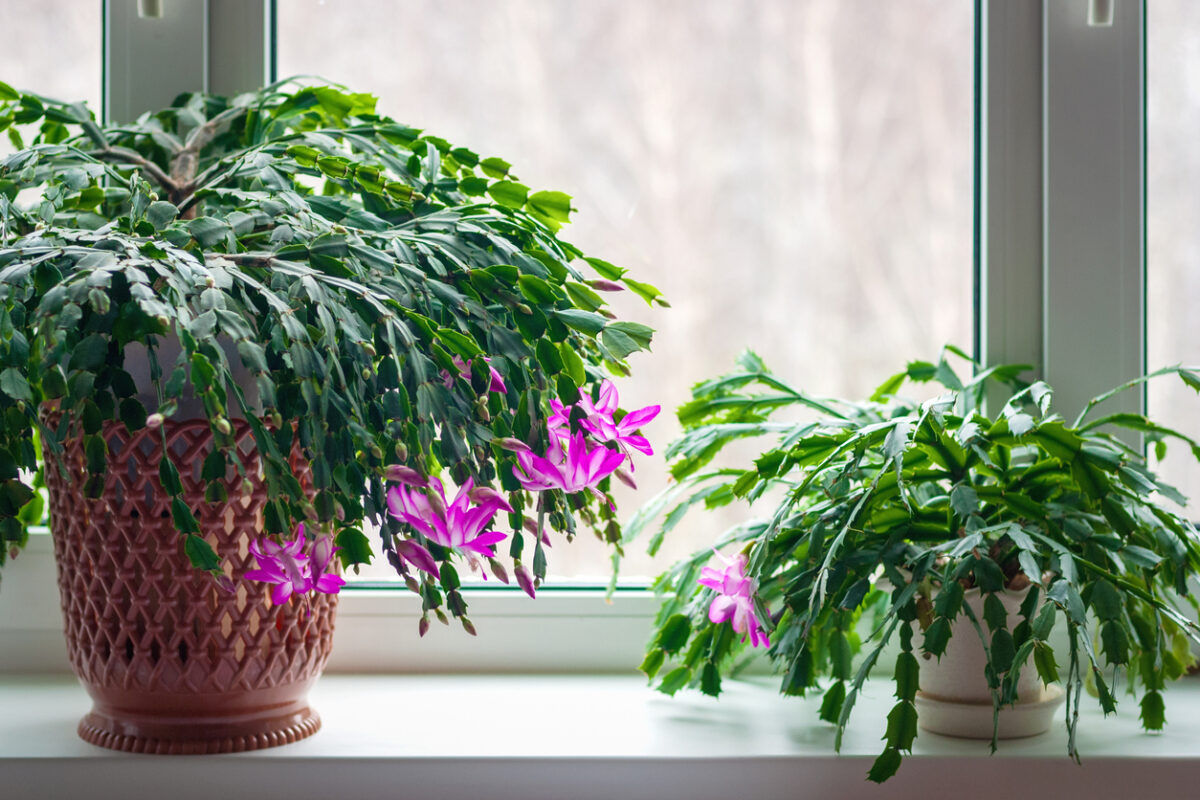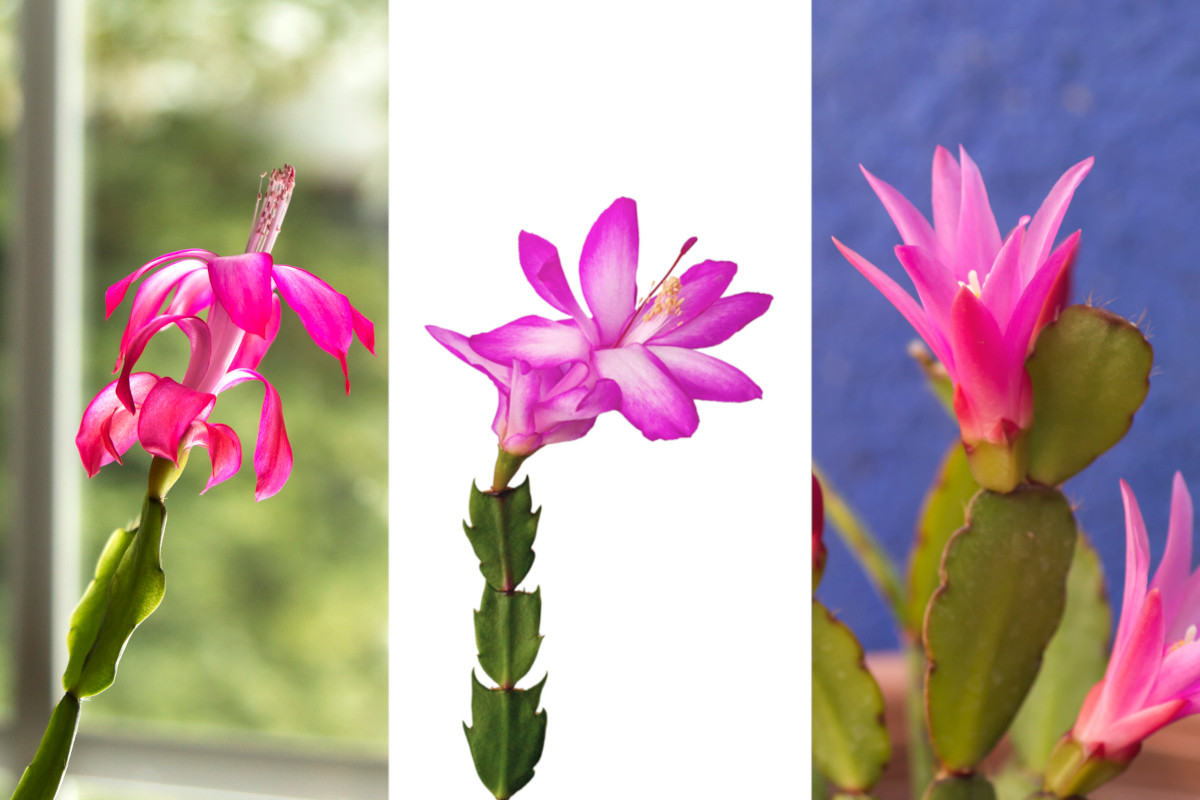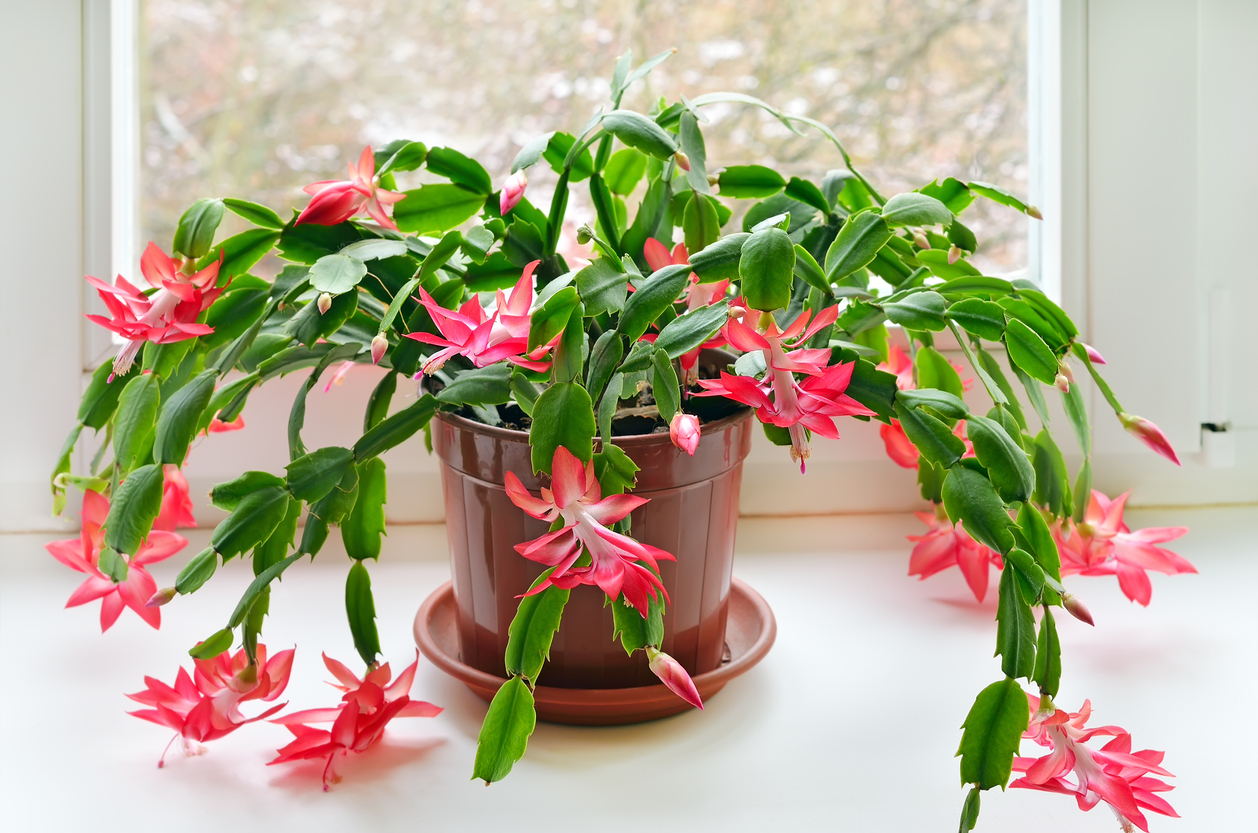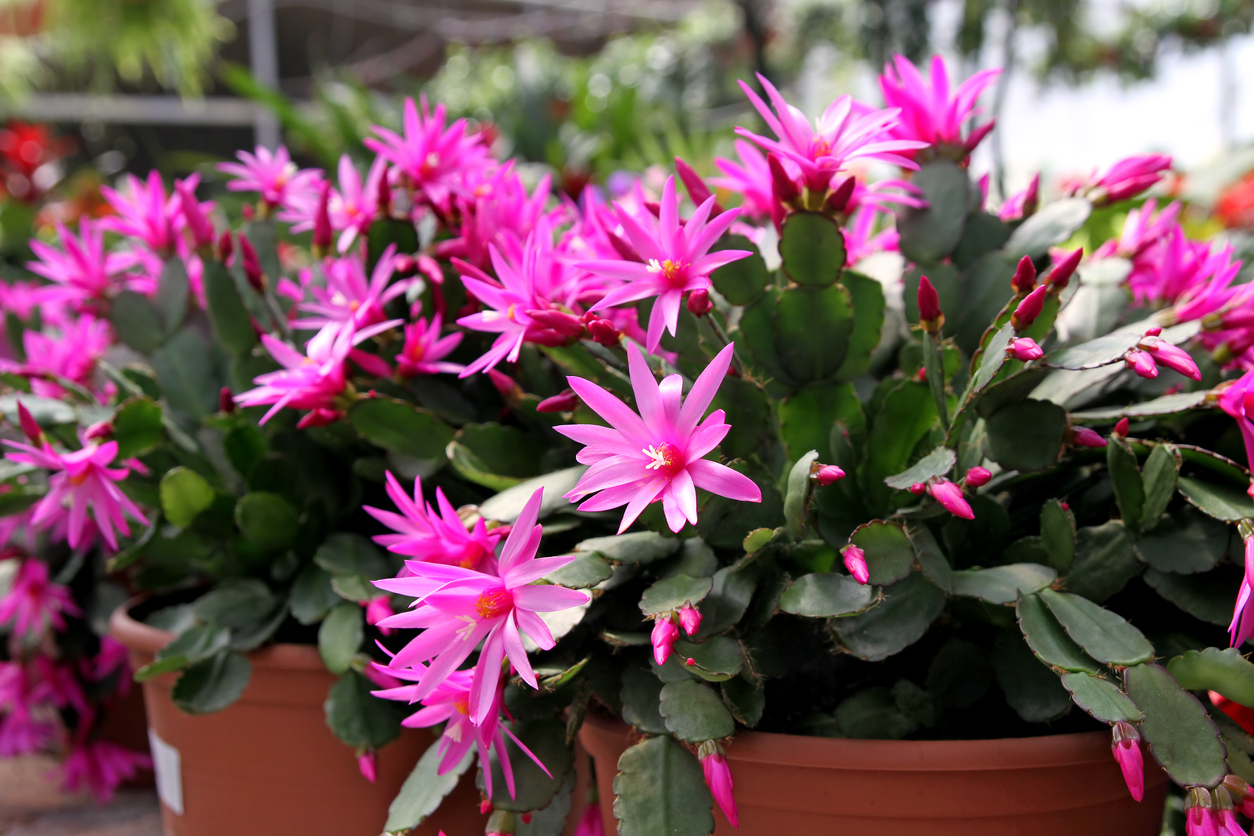

We may earn revenue from the products available on this page and participate in affiliate programs. Learn More ›
Created in 1850 from a cross between Schlumbergera truncata and Schlumbergera russelliana, the true Christmas cactus (Schlumbergera x buckleyi) is now an heirloom and seldom sold online or in stores. Fortunately, it is still preserved by gardeners passing it on.
These days, S. truncata is called Thanksgiving cactus, Zygocactus, or “false Christmas cactus,” since most modern Christmas cacti (along with S. russelliana) are actually hybrids. Further complicating things, Schlumbergera bridgesii is listed as the former name of S. russelliana. This complex relationship makes comparing Christmas cactus vs. Thanksgiving cactus slightly confusing.
Easter cactus, meanwhile, is also known as spring cactus. Botanically, it is called Schlumbergera gaertneri, Hatiora gaertneri, or Schlumbergera rhipsalidopsis, with multiple sources considering the latter two names synonyms of the first.
Thanksgiving, Christmas, and Easter cacti bloom at different times of the year.
Both Thanksgiving and Christmas cacti typically flower in mid-to-late autumn or early winter. (Although S. russelliana blooms in February or March, its crossing with the October or November-blooming S. truncata to produce the original Christmas cactus apparently resulted in a plant that flowers near Thanksgiving). Growers can bring modern cultivars into bloom around either Thanksgiving or Christmas by the regulating temperatures and hours of darkness the plants receive.
Like S. russelliana, the Easter cactus usually flowers in late winter or early spring. However, growers can also time the plant to bloom close to the Easter holiday in any particular year. If you are debating the merits of Christmas cactus vs. Easter cactus, keep in mind that Thanksgiving and Christmas cacti may produce a second smaller flush of flowers in spring, while the Easter cactus blooms only once per year.
Christmas and Thanksgiving cactus flowers are tubular, while Easter cactus has star-shaped blooms.

One easy-to-spot difference between Christmas and Thanksgiving cactus is the shape of their flowers. Thanksgiving cactus flowers are zygomorphic (bilaterally symmetrical), while Christmas cactus blooms are radiosymmetrical (radially symmetrical).
On the traditional Christmas cactus, which combines the two species, the red and/or pink tubular flowers with pink pollen dangle like bells decorated with tiers of curving “petals”’ (actually tepals). Meanwhile, the Thanksgiving cactus offers flowers in a wider range of colors, including yellow, white, and purple, as well as red and pink. Held horizontally on the plant, with their tiers of tepals swept back, they produce yellow pollen. The flowers of the Easter or spring cactus usually are red or pink with yellow pollen, but they have a more star-like appearance than those of other holiday cacti. The number of points on those stars varies.
To help with holiday cactus identification, compare the flower shapes in the above image (from left to right: Christmas, Thanksgiving, and Easter cactus).
RELATED: Beyond Poinsettias: 23 Houseplants That Bloom in Winter
Thanksgiving cactus stem segments have sharp projections, whereas Christmas and Easter ones are more rounded.

Native to Brazilian rainforests, the holiday houseplant cacti grow on trees there without the benefit of soil. That explains why they need constant light moisture but rot easily if kept too soggy. Rather than actual leaves, these succulent plants have flat and segmented stems called phylloclades.
When debating whether your plant is a Thanksgiving cactus vs. Christmas cactus, keep in mind that the Thanksgiving cactus also is known as the crab cactus because its segments “show their claws” (sharp projections). The segments of the original Christmas cactus are scalloped instead, while those of the Easter cacti are the most softly rounded.
All three holiday cacti are short-day plants.
Both Thanksgiving and Christmas cactus are cued to set buds after daylight hours decrease in autumn. They need at least 6 weeks’ worth of 13- to 14-hour nights to bloom.
Plants that contain the most S. truncata (Thanksgiving cactus) lineage tend to bloom a bit earlier than those heavily crossed with S. russelliana. The Easter cactus requires a more extended period of long nights—usually 2 to 3 months of them—to set buds, which is why it usually doesn’t bloom until considerably later than the other two holiday cactus houseplants.
Christmas, Thanksgiving, and Easter cacti require similar care.

Fortunately, Christmas cactus care, Thanksgiving cactus care, and Easter cactus care are all similar. Give the plants bright, indirect light and damp, fast-draining soil such as a combination of cactus mix and orchid bark. Fertilize these succulents only during spring and summer, keeping them in a protected location if outdoors, such as under a porch roof or tall tree, where they can be left out long enough to experience shortening days and cooling temperatures in autumn (but only until temperatures drop into the 40-to-50 degrees Fahrenheit range—no lower).
After you bring them indoors, reduce their watering and place them where they receive 13 to 14 hours of complete darkness every night for 6 weeks—2 months for Easter cactus—with daytime temperatures between 65 and 70 degrees and nighttime ones between 55 and 60 degrees.
Then, shift them to where you want them to stay and resume their regular watering schedule. Avoid moving your holiday plants after their buds form, or they may fall off.
RELATED: The Best Soils for Succulents
